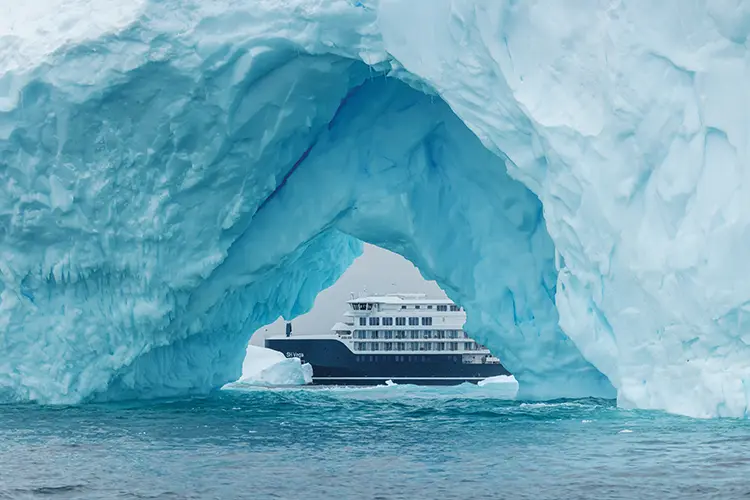
For years, cruise ships have symbolised environmental harm – spewing smoke, damaging marine life and swamping fragile destinations with tourists. As ships grow ever larger, these problems have intensified. But amid the noise, a quieter revolution is stirring, as innovators, activists and governments reimagine what sustainable cruising could look like.
Over the years, there has been a notable trend in the cruise industry towards building ever-bigger boats. Royal Caribbean’s Icon of the Seas currently holds the title of the world’s largest cruise ship, with 7,600 passengers. Stretching about 365 metres – around the height of the Empire State Building – it features 40 dining and drinking venues, seven swimming pools and an ice rink. Norwegian Cruise Line, however, is set to challenge this, having recently ordered four colossal megaships with an 8,300-person capacity each.
The increase in both the number and scale of cruise ships since the 1990s has coincided with a documented rise in the frequency and severity of the cruise industry’s environmental violations, as reported by Friends of the Earth. In 2017, the Miami-based Carnival Corporation (which operates nine cruise lines including Cunard, Holland America, P&O and Princess Cruises) was ordered to pay US$40 million for illegally dumping oil-contaminated waste and falsifying logs to hide its actions. In 2019, it received a US$20 million penalty for violations of its environmental probation, which included dumping 85,000 litres of untreated greywater into Alaska’s Glacier Bay National Park.

It’s precisely as an antidote to this way of travelling, says Heather Thorkelson, that Minimal Impact Cruises was born. In 2026, the company is set to launch an entirely new kind of cruise vessel – one that relies solely on wind and solar power. The Captain Arctic will be a 70-metre-long ship featuring five retractable aluminium ‘solar sails’ – each 35 metres high and covered in 1,858 square metres of solar panels – that promise a 90 per cent reduction in carbon dioxide emissions compared to conventional cruise ships operating in the polar region.
Canadian-born Thorkelson, who is vice-chair of the Polar Tourism Guides Association, has worked in the polar expedition world for almost a decade and a half. Together with Sophie Galvagnon, one of only a few female shipbuilders in the industry, she hopes to transform the cruise industry. ‘In an industry where almost all new builds are going for scale, the 36-passenger Captain Arctic helps us, as a company of polar guides, stay true to our roots of small-scale adventure that leaves minimal impact on the wild spaces we love so much.’
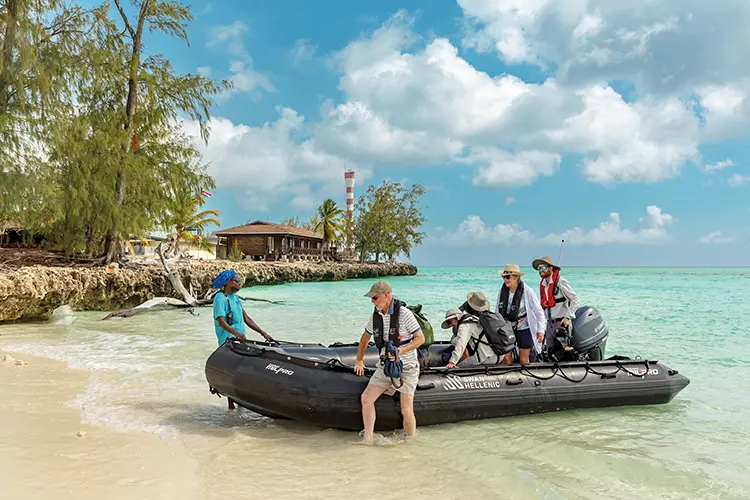
REDUCING IMPACTS
While the Captain Arctic is yet to set sail, other cruise companies have also been working to minimise their impact. ‘We’ve designed all our own, brand-new ships,’ says Mario Bounas, general manager at British cruise line Swan Hellenic. ‘They’re all built to the highest standards, with the latest-generation diesel-electric engines, which are designed to reduce harmful emissions. They’re extremely fuel-efficient compared to older vessels.’ A computer-controlled ‘dynamic positioning’ system also allows the new ships to stop without dropping anchor, which can damage fragile marine ecosystems.
Bounas has been in the travel industry for some 25 years and has worked on the biggest cruise ships in the world. Today, his focus is the small cruise industry – sometimes defined as vessels with fewer than 1,000 passengers, but which often have much smaller capacities (all three of Swan Hellenic’s ships carry fewer than 200 guests). According to Bounas, the growth in interest in these smaller ships has been ‘phenomenal’, driven by environmentally and socially aware travellers seeking a more personal travel experience. ‘It’s a very different mindset. We specialise in expeditions, and it just so happens that many of the places we visit can’t be reached without a ship.’

Carlos Mallo Molina, founder and CEO of ocean conservation NGO Innoceana, agrees that smaller cruise lines can offer a more sustainable experience. ‘Some of these boats have scientists and labs – you get to learn about marine species and actually connect with the ocean and the environment. But I would always say that being aware of your impact as a tourist is the first step, and that includes being aware of the impact of any cruise ship.’ Even without the development of new ports, he adds, the cruise industry is already a major source of problems for Tenerife. ‘There’s such a large influx of people who often don’t care that much about the destination they visit. They’re coming here because it’s cheap. This kind of mass tourism is slowly but surely eroding and destroying the character of the islands.’
GLOBAL CAMPAIGNER
When Mallo Molina began his new career in conservation, it came as a surprise to friends and family. ‘Everyone thought I was crazy,’ says the Spanish civil engineer. ‘My friends and colleagues asked me, “Why are you fighting against your own profession? Do you actually want to stop construction?”’
Mallo Molina comes from a family where he describes civil engineering as ‘a big thing’. ‘My father built a number of coastal ports and other infrastructure in the north of Spain. And I, of course, followed in his path.’ He’d spent ten years in the field – working on projects such as HS2, Britain’s planned high-speed railway, and the construction of the Erques Bridge in Tenerife – when he began work on a new branch of the Canary Islands’ southern motorway, which would extend to a small coastal town called Fonsalía. ‘That’s when I discovered all the development that was planned.’
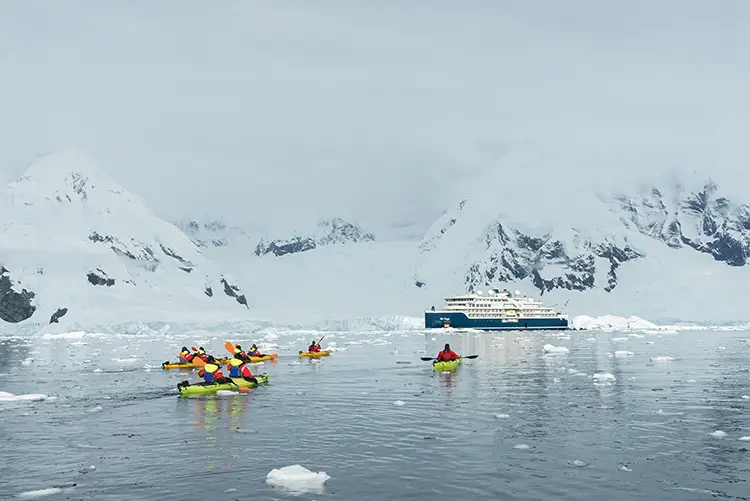
For years, the port of Los Cristianos in southern Tenerife has been over saturated, particularly during peak tourist seasons and weekends. In 2024, 2.3 million passengers and an estimated 500,000 vehicles passed through the facilities. To ease congestion, the government proposed the construction of a new large-scale port at Fonsalía, right in the heart of Spain’s most important marine protected area. ‘I’ve always loved the ocean,’ says Mallo Molina, ‘but in Tenerife, it’s where
I spent all my free time. Jump in the water and you’re surrounded by green turtles and rays – there’s so much life. Knowing that the new port would destroy all that I loved,’ he explains, ‘was a big factor in my career change.’
Enjoying this article? Check out our related reads…
Mallo Molina led a global campaign against the project, highlighting the devastating and irreversible consequences and, faced with overwhelming opposition, the Canary Islands government cancelled the construction of Fonsalía port. He credits the multi-disciplinary team gives particular credit to the shifting attitudes of the general public. ‘After we shared our own environmental impact assessment of the construction, many people who had wanted the port changed their minds.’
REGULATIONS
Each evening, as the small cruise ship La Pinta anchors near Genovesa, a small island in the northeastern Galápagos, a nightly spectacle unfolds. Groups of Galápagos sharks – and the occasional sea lion – gather to prey on the schools of fish drawn in by the lights of the ship. Despite the Galápagos Islands being Ecuador’s most popular tourist destination, the waters beyond this lively hunting scene remain undisturbed by other visitors on other ships.
The Galápagos Islands, celebrated for their fascinating biodiversity, have long understood the importance of safeguarding their remarkable yet fragile ecosystem. The forward-thinking Ecuadorian government has put in place some of the most stringent regulations globally for cruise tourism, making it a leading example for responsible cruising elsewhere.


These regulations include a maximum of 100 passengers on board any vessel, and a maximum of 1,660 total cruise ship passengers within the 8,000-square-kilometre boundary of the Galápagos National Park. In comparison, the Louvre Museum in Paris (60,600 square metres) receives an average of 22,000 visitors per day.
The Galápagos isn’t the only destination looking to focus on cleaner, smaller-scale cruising. Norway is at the forefront of promoting emission-free cruising in its fjords, setting a requirement for ferries and cruise ships to be emission-free by 2032. Ships carrying more than 500 passengers can’t land passengers in Antarctica, and many other destinations have introduced or are discussing caps on the sheer number of cruise ships arrivals, including Greece, Barcelona, Mallorca, Dubrovnik and Amsterdam.
‘I personally believe this trend will continue to grow,’ says Bounas. ‘While large cruise ships can impact destinations, it’s not always for the better. In contrast, our smaller ships are consistently welcomed in the ports we visit, and we ensure our stays are long enough for local communities to truly benefit from tourism.’
LOW IMPACT CRUISE SHIPS
THE ARCTIC CIRCLE
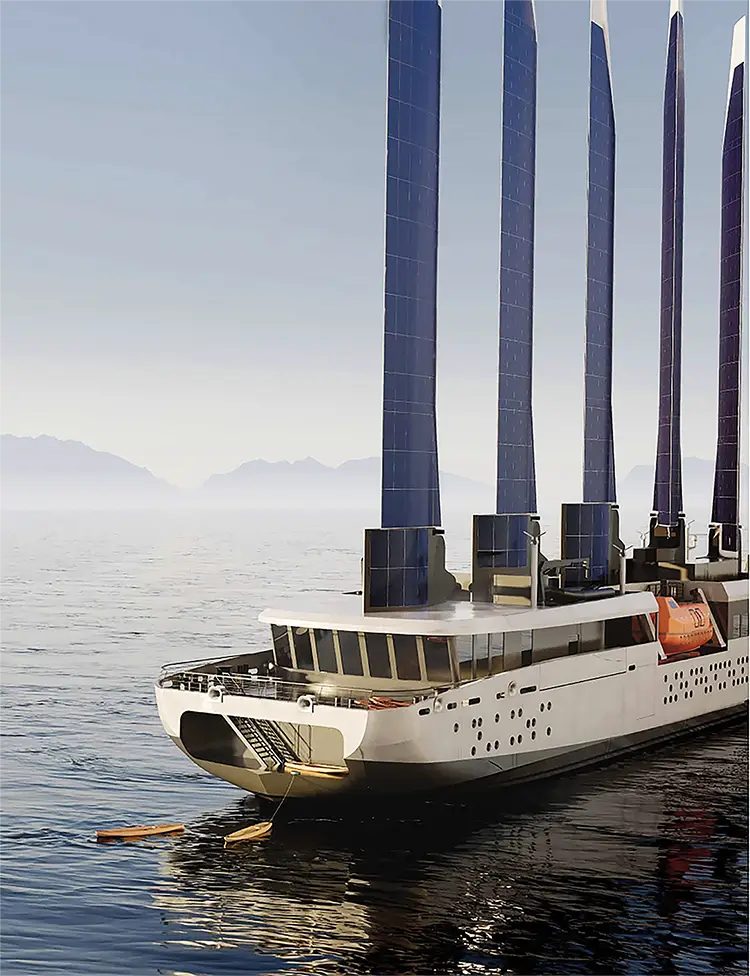
Embark on a revolutionary Arctic journey in 2026 aboard the Captain Arctic, Minimal Impact Cruises’ pioneering new ship powered by nature. Join the first expedition cruise of its kind, setting sail on one of three itineraries in the frozen north. Each destination offers something different: discover the dramatic fjords and mesmerising Northern Lights of northern Norway, with chances to spot orcas and sea eagles; venture to Svalbard’s icy wilderness for polar bear encounters amid stunning glacial landscapes; or explore Greenland’s glaciers and immerse yourself in the rich traditions of Inuit culture. The Captain Arctic’s innovative design allows the ship to operate silently and with close to zero emissions, minimising its impact on these fragile environments and the local wildlife. With a small group of 36 passengers, wildlife observation is carefully managed to be non-intrusive, and shore landings have a limited impact on delicate flora. The flexible itineraries, dictated by nature’s rhythms, promise exceptional wildlife encounters. minimalimpactcruises.com
EUROPE

Noble Caledonia’s small-ship European cruises offer travellers a unique lens through which to view familiar destinations. Itineraries include island-hopping cruises in Scotland or Croatia or cross-continent river cruises along the Danube and the Rhine. Onboard, expert guest speakers offer enriching lectures that enhance travellers’ understanding of the history, culture and wildlife of the regions visited, while immersive shore excursions take you beyond the tourist traps. noble-caledonia.co.uk
AFRICA

An African small-ship cruise offers travellers the chance to explore destinations off the typical tourist trail. You’ll travel between countries and coastal regions, bypassing the hurdles of long overland journeys and unpredictable infrastructure. Instead, you can spend more time among sweeping sand dunes in Namibia, exploring lush tropical rainforests in Gabon, or immersed in the vibrant energy of historic city streets. With Swan Hellenic, you will also have the opportunity to learn from guest lecturers who have a wealth of specialist knowledge, helping you connect with the destinations you visit. swanhellenic.com
ANTARCTICA
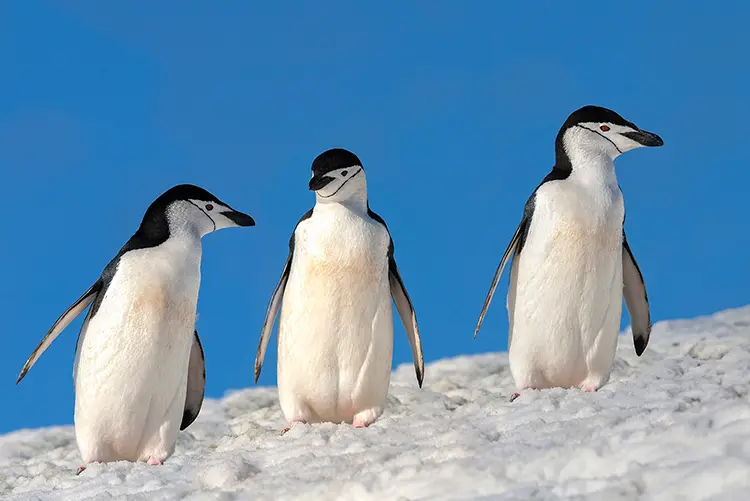
Secret Atlas is a pioneer of the ‘Expedition Micro Cruise’ – adventures with the smallest group sizes to both poles. Travelling in a group of just 48 guests, you’ll be led by expert guides who adapt each day to the weather, wildlife and unfolding opportunities. Antarctic journeys sail beyond the legendary Drake Passage to the dramatic coastline of the Antarctic Peninsula and wildlife-rich South Georgia Island. Guests may land on the penguin-packed beaches of Deception Island, cruise the icy waters of Paradise Bay, or send a postcard from the remote outpost of Port Lockroy. Choose from a micro cruise, a photography tour, or a private charter. secretatlas.com
THE GALÁPAGOS

To truly appreciate the Galápagos’ many distinct islands, each with their unique character and landscape, choose a small-ship cruise. Metropolitan Touring offers expertly crafted itineraries through the Eastern, Northern, and Western regions, maximising your wildlife encounters in each place you go. With approved activities including coastal exploration, hiking, kayaking, snorkelling and glass-bottomed boat tours, you’ll be able to responsibly watch red- and blue-footed boobies on San Cristóbal and Genovesa, walk across lava fields full of lizards on Santiago, or snorkel with sea lions and penguins near Bartolomé. metropolitan-touring.com



